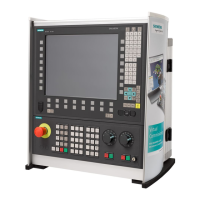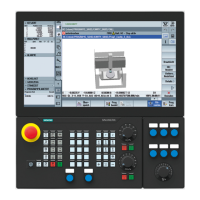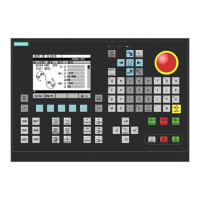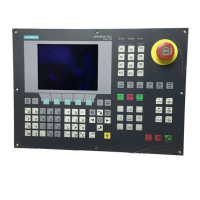Detailed Description
2.8 Special handling of tool compensations
Tool Compensation (W1)
Function Manual, 08/2005 Edition, 6FC5397-0BP10-0BA0
2-121
Note
When toolholders with orientation capability are used, it is common to define all tools for a
non-mirrored basic system, even those, which are only used for mirrored machining. When
machining with mirrored axes, the toolholder is then rotated such that the actual position of
the tool is described correctly. All tool length components then automatically act in the
correct direction, dispensing with the need for control of individual component evaluation via
setting data, depending on the mirroring status of individual axes.
The use of toolholders with orientation capability is also practical if the physical
characteristics of the machine type prevents tools, which are permanently installed with
different orientations, from being rotated. Tool dimensioning can then be performed uniformly
in a basic orientation, where the dimensions relevant for machining are calculated according
to the rotations of a virtual toolholder.
2.8.6 Temperature offsets in the tool direction (SD 42960: TOOL_TEMP_COMP)
Note
Temperature offset in the tool direction is operative only as an option with generic 5-axis
transformation, types 24 and 56.
2.8.7 Tool lengths in the WCS allowing for the orientation
Change tool or working plane
The values displayed for the tool correspond to the expansion in the WCS. If a toolholder
with an inclined clamping position is to be used, you should make sure that the
transformation used supports the toolholder. If this is not the case, incorrect tool dimensions
will be displayed. When changing the working plane from G17 to G18 or G19, you should
ensure that the transformation can also be used for these working planes. If the
transformation is only available for G17 machining, the dimensions continue to be displayed
for a tool in the Z direction after the plane change.
When transformation is deactivated, the basic tool is displayed in the x, y or z direction,
according to the working plane. Allowance is made for a programmed toolholder. These tool
dimensions are not altered when traversing without a transformation.
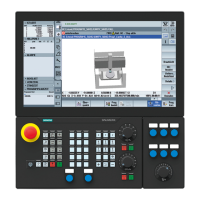
